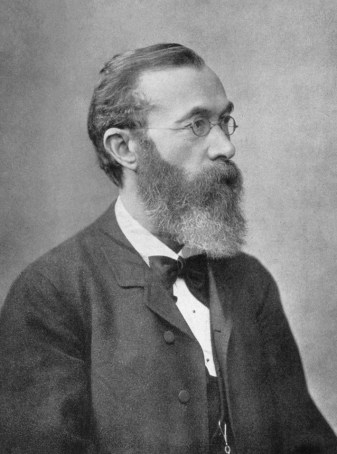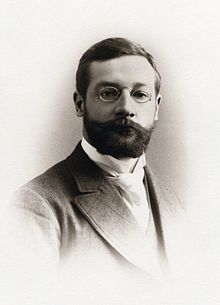Structuralism is a concept and theory that emerged in the late 19th and early 20th century, challenging traditional ideas about the nature of reality and human behavior. It is based on the belief that underlying structures and systems govern human thought and behavior, rather than individual experiences and perceptions. This theory has had a significant impact on the fields of sociology, anthropology, linguistics, and psychology, shaping our understanding of society and human behavior. In this essay, we will explore the concept and theory behind structuralism and discuss its implications for society and our understanding of the complexities of human behavior.
When psychology was first established as a science separate from biology and philosophy, the debate over how to describe and explain the human mind and behavior began. Structuralism emerged as the first school of thought and some of the ideas associated with the structuralist school were advocated by the founder of the first psychology lab, Wilhelm Wundt. One of Wundt’s students, a man named Edward B. Titchener, would later go on to formally establish and name structuralism, although he broke away from many of Wundt’s ideas. Almost immediately other theories surfaced to vie for dominance in psychology. In response to structuralism, an American perspective emerged under the influence of thinkers such as Charles Darwin and William James.

Wilhelm Wundt
Structuralism in psychology refers to the theory founded by Edward B. Titchener (1867-1923), with the goal to describe the structure of the mind in terms of the most primitive elements of mental experience. This theory focused on three things: the individual elements of consciousness, how they organized into more complex experiences, and how these mental phenomena correlated with physical events. The mental elements structure themselves in such a way to allow conscious experience.
Titchener and structuralism
Edward B. Titchener is the founder of the theory of structuralism. Because he was student of Wilhelm Wundt at the University of Leipzig, Titchener’s ideas on how the mind worked were heavily influenced by Wundt’s theory of voluntarism and his ideas of association and apperception (the passive and active combinations of elements of consciousness respectively). Titchener attempted to classify the structures of the mind, like chemists classify the elements of nature into the periodic table.

Edward B. Titchener
Titchener argued that only observable events constituted science and that any speculation concerning unobservable events has no place in society (this view was similar to the one expressed by Ernst Mach). In his book, Systematic Psychology, Titchener wrote:
It is true, nevertheless, that observation is the single and proprietary method of science, and that experiment, regarded as scientific method, is nothing else than observation safeguarded and assisted.
Mind and consciousness
Titchener believed that the goal of psychology was to study mind and consciousness. He defined consciousness as the sum total of mental experience at any given moment, and the mind as the accumulated experience of a lifetime. He believed that if the basic components of the mind could be defined and categorized, then the structure of mental processes and higher thinking could be determined. What each element of the mind is (what), how those elements interact with each other (how), and why they interact in the ways that they do (why) was the basis of reasoning that Titchener used in trying to find structure to the mind.
Introspection
The main tool that Titchener used to try and determine the different components of consciousness was introspection. Titchener writes in his Systematic Psychology: The state of consciousness which is to be the matter of psychology … can become an object of immediate knowledge only by way of introspection or self-awareness… and in his book An Outline of Psychology: …within the sphere of psychology, introspection is the final and only court of appeal, that psychological evidence cannot be other than introspective evidence.
Unlike Wundt’s method of introspection, Titchener had very strict guidelines for the reporting of an introspective analysis. The subject would be presented with an object, such as a pencil. The subject would then report the characteristics of that pencil (color, length, etc.). The subject would be instructed not to report the name of the object (pencil) because that did not describe the raw data of what the subject was experiencing. Titchener referred to this as stimulus error. In his translation of Wundt’s work, Titchener illustrates Wundt as a supporter of introspection as a method through which to observe consciousness. However, introspection only fits Wundt’s theories if the term is taken to refer to psychophysical methods.
Elements of the mind
Titchener’s theory began with the question of what each element of the mind is. He concluded from his research that there were three types of mental elements constituting conscious experience:
- Sensations (elements of perceptions)
- Images (elements of ideas)
- Affections (elements of emotions)
These elements could be broken down into their respective properties, which he determined were quality, intensity, duration, clearness, and extensity. Both sensations and images contained all of these qualities; however, affections were lacking in both clearness and extensity.
Interaction of elements
The second issue in Titchener’s theory of structuralism was the question of how the mental elements combined and interacted with each other to form conscious experience. His conclusions were largely based on ideas of associationism. In particular, Titchener focuses on the law of contiguity, which is the idea that the thought of something will tend to cause thoughts of things that are usually experienced along with it.
Titchener rejected Wundt’s notions of apperception and creative synthesis (voluntary action), which were the basis of Wundt’s voluntarism. Titchener argued that attention was simply a manifestation of the “clearness” property within sensation.
Physical and mental relationship
Once Titchener identified the elements of mind and their interaction, his theory then asked the question of why the elements interact in the way they do. In particular, Titchener was interested in the relationship between the conscious experience and the physical processes. Titchener believed that physiological processes provide a continuous substratum that give psychological processes a continuity they otherwise would not have. Therefore, the nervous system does not cause conscious experience, but can be used to explain some characteristics of mental events
.
Wundt and structuralism
Wilhelm Wundt instructed Titchener, the founder of structuralism, at the University of Leipzig. Wundt is often associated in past literature with structuralism and the use of similar introspective methods. However, this is not the case. Wundt makes a clear distinction between pure introspection, which is the relatively unstructured self-observation used by earlier philosophers, and experimental introspection. Wundt believes this type of introspection to be acceptable since it uses laboratory instruments to vary conditions and make results of internal perceptions more precise.
The reason for this confusion lies in the translation of Wundt’s writings. When Titchener brought his theory to America, he also brought with him Wundt’s work. Titchener translated these works for the American audience, and in so doing misinterpreted Wundt’s meaning. He then used this translation to show that Wundt supported Titchener’s own theories. In fact, Wundt’s main theory was that of voluntarism.
Criticisms
Structuralism has faced a large amount of criticism, particularly from the behaviorist school of psychology. The main critique of structuralism was its focus on introspection as the method by which to gain an understanding of conscious experience. Critics argue that self-analysis was not feasible, since introspective students cannot appreciate the processes or mechanisms of their own mental processes. Introspection, therefore, yielded different results depending on who was using it and what they were seeking. Some critics also pointed out that introspective techniques actually resulted in retrospection – the memory of a sensation rather than the sensation itself.
Behaviorists fully rejected even the idea of the conscious experience as a worthy topic in psychology, since they believed that the subject matter of scientific psychology should be strictly operationalized in an objective and measurable way. Because the notion of a mind could not be objectively measured, it was not worth further inquiry. Structuralism also believes that the mind could be dissected into its individual parts, which then formed conscious experience. This also received criticism from the Gestalt school of psychology, which argues that the mind cannot be broken down into individual elements.
Besides theoretical attacks, structuralism was criticized for excluding and ignoring important developments happening outside of structuralism. For instance, structuralism did not concern itself with the study of animal behavior, abnormal behavior, and personality. In addition, structuralism denied adopting the theory of evolution into its theory, which is arguably its biggest downfall. Ironically, in a critique of functional psychology, Titchener writes in his Systematic Psychology: Functional psychology was born of the enthusiasm of the post-Darwinian days, when evolution seemed to answer all the riddles of the universe; it has been nourished on analogies drawn from a loose and popular biology; it will pass as other fashions pass. Titchener himself was criticized for not using his psychology to help answer practical problems. Instead, Titchener was interested in seeking pure knowledge that to him was more important than commonplace issues.
Contemporary structuralism
Today, the theory of structuralism has become virtually extinct. While researchers are still working to offer objective experimental approaches to measuring conscious experience, in particular within the field of cognitive psychology, the use of Titchener’s form of introspection is no longer used. Today, any introspective methodologies are done under highly controlled situations and are understood to be subjective and retrospective. Proponents argue that psychology can still gain useful information from using introspection in this case.